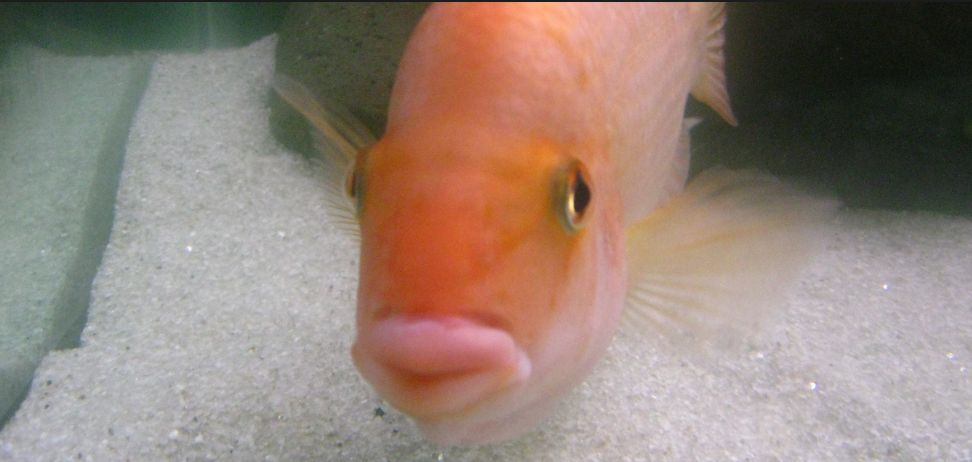
“Duck lips” are simply fat lips. There are two types of ‘Duck Lips” in aquarium fish. One is caused by bacteria and is normally a rapid killer. And one form, which only occurs in Lake Malawi cichlids, is a virus which comes on slowly and can be very benign.
The bacterial form is typically caused a gram-negative bacterium (columnaris, aeromonas, etc.) and can be a rapid killer of many fish in succession (there are many strains of each bacterial species, some very virulent and some relatively benign). Duck lips can rapidly progress to erosion of the lips and ultimately the death of the fish in only a few days, if one has one of the more aggressive forms of the disease.
There is a form of duck lips which is confined to Lake Malawi cichlids which presents as fat lips. It come on slowly and is a virus. It is untreatable and fish often recover fully after several months. For more on this go to this link:
10.8. Lymphocystis
Also note there are some haps from Lake Malawi that have naturally fat lips. These fish include such beauties as Placidochromis phenochilus White Lips. These fat lips are much less pronounced than either viral or bacterial duck lips.
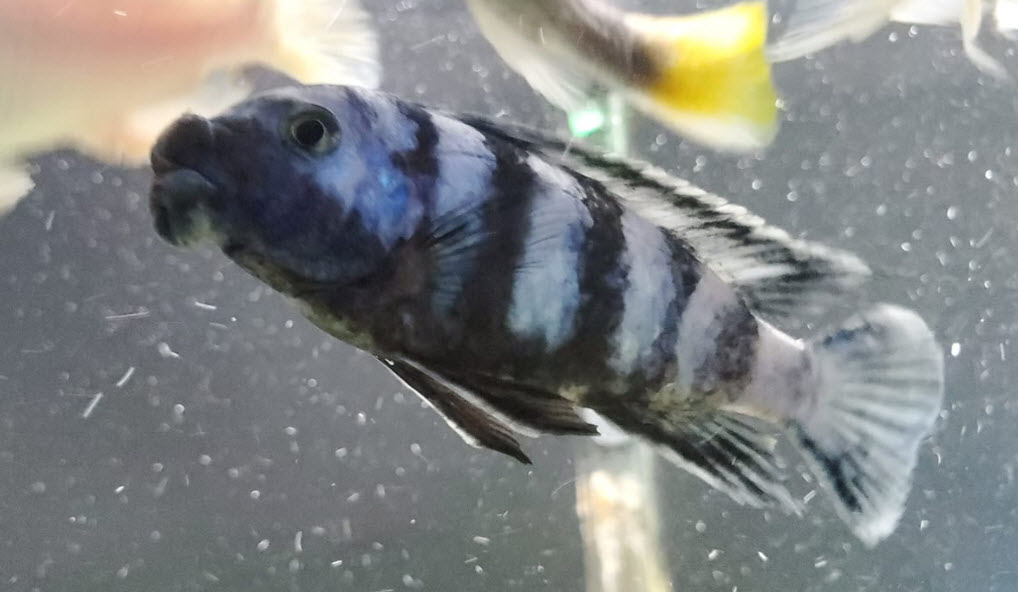
Treatment
If the duck lips comes on rapidly it is a bacterial infection. Bacterial infections should be treated with broad spectrum antibiotics (Thomas Labs Fish Mox, Midland Vet Service Aqua-Mox, VetDepot Amoxicillin, Fishbiotic Ampicillin, Mardel Maracyn 2, SeaChem KanaPlex, Thomas Labs Fish Min, API Fin And Body Cure and Thomas Labs Fish Doxy).
Bacterial infections are most effectively treated with antibiotics in the food. Many believe (and the instructions on the antibiotics say!) that antibiotics need to be added to the water. They are simply incorrect. This controversial topic is covered in the following link:
12.5. Fish Don’t Drink
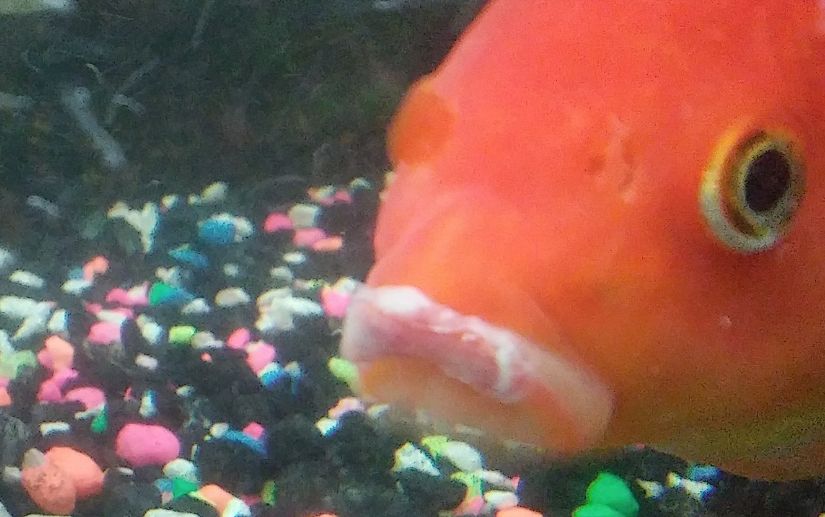
It is easy to make medicated food. Heat 1/4 cup water (two ounces or 58 milliliters, not a lot) in the microwave. Then blend seven grams of plain animal derived gelatin (Knox gelatin, one packet) into the hot solution with vigorous stirring. Take two tablespoons of dry commercial fish food (pellets or flake) and mix it with just a little of the hot water/ gelatin mixture. Add hot water/gelatin until you get a paste like consistency. If it gets too watery just add more food. To get gel food to float simply mix in a little whipped cream at this point.
Then add just a “smidgen” (roughly 1/16 teaspoon, a 1% to 2% addition) of medication to the mud. If you are using more than one medication mix the medications together, then use just a “smidgen” of the mixture. If you are using a packet of medication, take just a “smidgen” of the packet contents. Mix and mash the whole mass thoroughly. Spread it out into a pancake about 1/8th inch (3 mm) thick on a plastic film or a plate. Then put in the refrigerator. If you plan on keeping it for more than two weeks put it in a small plastic bag and freeze.
All the fish in the aquarium should be fed a steady diet of the antibiotic laced food for at least ten days. Note that the exact amount of medication which goes into the food is not very important. Antibiotics can be overdosed pretty much with abandon as they are only toxic in large doses over a period of months.
If you can’t resist the urge to treat the water, remove the biofiltration media (including sponge and/or foam) in the filters and put it in an open container for the duration of the treatment. Sometimes antibiotics kill the beneficial bacteria and sometimes they don’t. In any case the filter media will denature the antibiotics. Monitor the ammonia and would do a 50% water change if it spikes above 1 ppm. Reduce the amount of food fed by 2/3 rds.
Note that if antibiotics are not available (such as in Europe or Canada), it is quite easy to take a pill or capsule of human antibiotic and use it for fish. If it is a pill just grind it up. Just be aware that the human antibiotics are about ten times more potent than the aquarium antibiotics, so just a “smidgen” in the food is more than enough. This is a very good option for the folks in Europe or Canada, where fish antibiotics are illegal.
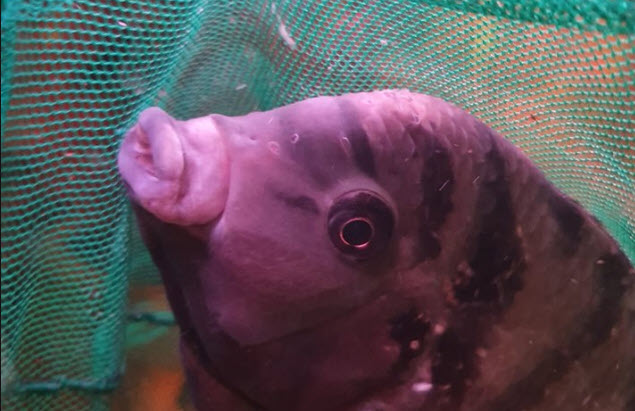
If the Fish Won’t Eat
If the fish stop eating altogether things get a little dicey. If fish haven’t eaten in a week one can do the following:
- Make up a solution of one fourth teaspoon of the chosen antibiotic into one tablespoon of water.
- Enlist the help of another person
- Net the fish out of the tank one by one into a wet towel.
- With the other person holding the fish pry open the mouth of the fish with a plastic 1 milliliter pipette filled with the medicine solution.
- Put the tip of the pipette deep into the throat of the fish and squirt one milliliter of the medicine solution into the fish.
- Release back into the tank
This is a drastic solution many are uncomfortable with, but if the fish aren’t eating they will start dying, not because of starvation but because of the pathogen inside them.
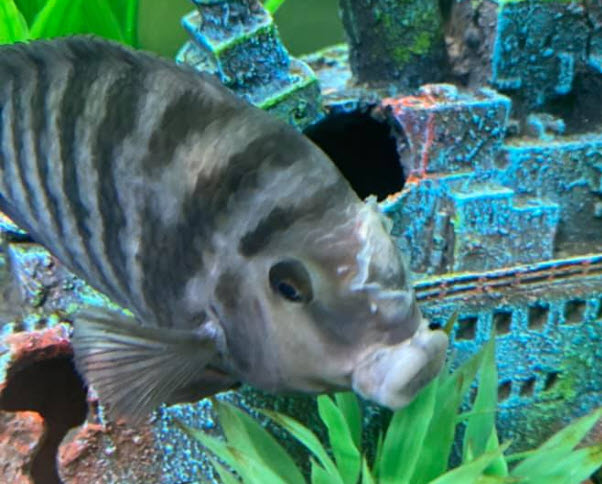
The Shallow Bath Method
There is one alternative to the pipetting method. Take a flat container like a cake pan and fill it with tank water to a depth of roughly half the body width of the fish. Add the amount recommended for 10 gallons of water by the medication directions to the shallow water and mix well. Put the fish in the resulting soup for one to five minutes and allow it to flop around and gasp. There is a good chance the fish will swallow significant quantities of medication during this bath routine.
This technique is based on the few studies which have shown medications to be effective “mixed into the water”. When one examines these studies on finds the researchers actually studied the fish with concentrated baths for short duration’s, not adding it to the water the fish was living in. The fish in these baths could not swim and were typically gasping and throwing themselves around. This allows some medication to go down the fish’s gullet.
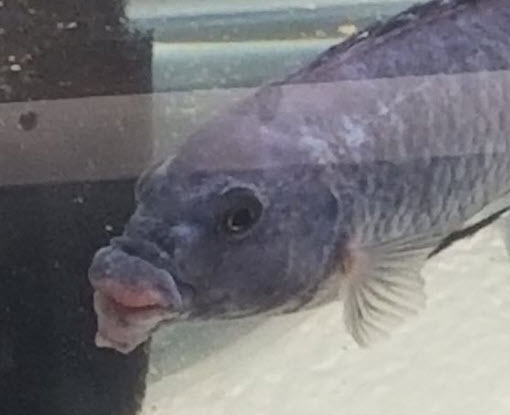
If one has more than one fish with a bacterial disease, one must treat the whole aquarium. This is an emergency. Don’t fool around with herbs, tree leaf oils or some ineffective treatment. Ben Ochart treated a bacterial infection with Pimafix and Melafix. They did nothing to stop the infection. He lost a lot of large beautiful fish before he stopped the infection with antibiotics. This link covers the snake oil medications such as Melafix and Pimafix:
12.4.1. Natural Medications
The entire topic of bacterial infections in tropical aquarium fish is covered in more detail in this link:
10.3.11. Treating Bacteria
Return to Diseases Menu
Return to Bacterial Diseases Menu
.
Aquarium Science Website
The chapters shown below or on the right side in maroon lead to close to 400 articles on all aspects of keeping a freshwater aquarium. These articles have NO links to profit making sites and are thus unbiased in their recommendations, unlike all the for-profit sites you will find with Google. Bookmark and browse!
.

Dave says
In reply to Mitch ……. ANY human antibiotic is fine.
Mitch says
What human antibiotic do you recommend
I live in Canada so can’t get fish meds